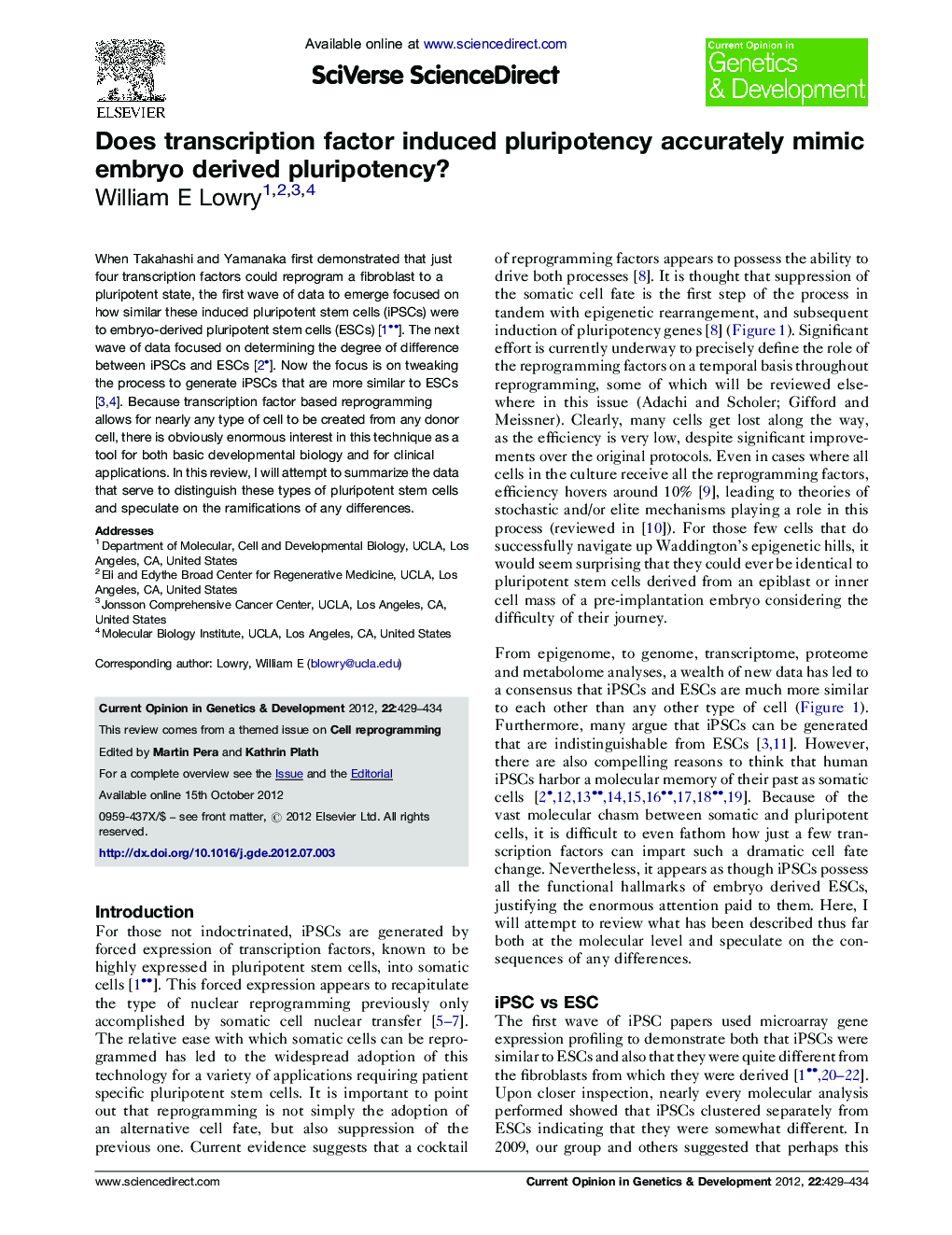| Article ID | Journal | Published Year | Pages | File Type |
|---|---|---|---|---|
| 2784882 | Current Opinion in Genetics & Development | 2012 | 6 Pages |
When Takahashi and Yamanaka first demonstrated that just four transcription factors could reprogram a fibroblast to a pluripotent state, the first wave of data to emerge focused on how similar these induced pluripotent stem cells (iPSCs) were to embryo-derived pluripotent stem cells (ESCs) [1••]. The next wave of data focused on determining the degree of difference between iPSCs and ESCs [2•]. Now the focus is on tweaking the process to generate iPSCs that are more similar to ESCs [3 and 4]. Because transcription factor based reprogramming allows for nearly any type of cell to be created from any donor cell, there is obviously enormous interest in this technique as a tool for both basic developmental biology and for clinical applications. In this review, I will attempt to summarize the data that serve to distinguish these types of pluripotent stem cells and speculate on the ramifications of any differences.
